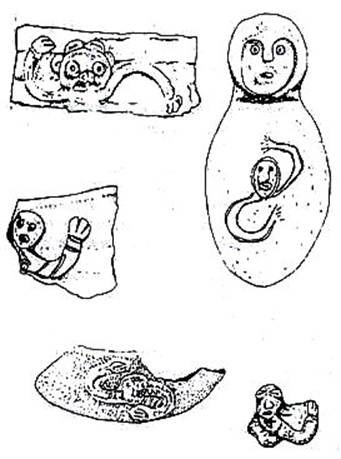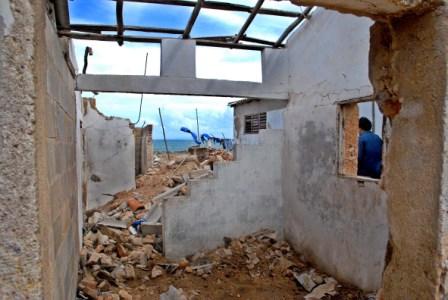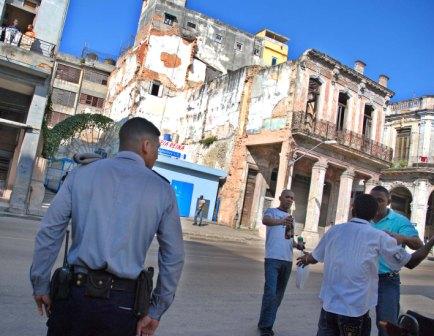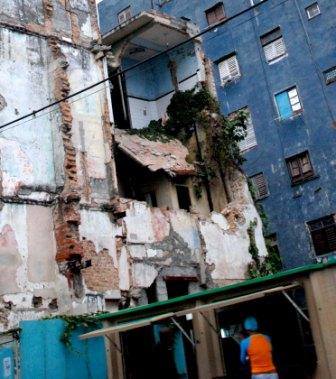Hurricanes & Cuba’s Housing Muddle
By Leonardo Padura Fuentes*

HAVANA TIMES, June 3 – The aboriginal Arawak tribes that populated the island of Cuba when the Spanish arrived had barely reached the stage of human development known as agro-potters.
The most advanced of them had still not developed techniques for hunting and crop cultivation, and they were very far from such important cultural advances as writing.
Their relationship with the world surrounding them was pragmatic, the fruit of tangible experience and what was transmitted orally from generation to generation.
Those original inhabitants of the Caribbean islands would soon learn, however, that their lives depended of their knowledge of and relationship with nature.
It is not strange, therefore, that they began deifying certain cosmic powers, particularly one that periodically put their existence at risk. This was a force of nature that visited them with remarkable frequency and that left death and destruction in its wake.
From the word that those “Indigenous” gave to that overwhelming force, Spanish and other European languages adopted its name: hurricane.

These earliest inhabitants of the Caribbean ended up mystifying hurricanes and identified them with a wicked force – demonic, we might say – that was represented by a small figure made of baked clay. In the center of its body they engraved the attribute that characterized that phenomenon, a spiral. They sought to synthesize that which – at atmospheric level, in form of wind and rain – devastated their environment with such force, violence and persistence.
The history of Cuba cannot be written without keeping in mind elements as diverse as ethnic and cultural miscegenation, the significance of crops like sugarcane and tobacco, the virtue of the island’s privileged geographical location or its historical relationship to the Spanish empire or the US. Nor would it be possible to trace that record without keeping in mind the destructive presence of hurricanes that visit us practically every year.
The living generations of Cubans will remember the tropical cyclone season of 2008 as one of the most voracious in our history. The trail of destruction left across virtually the entire island by hurricanes Gustav, Ike and Paloma was almost incomparable to others. They served to remind us that, in a world afflicted by climatic change, it is possible for horrors like those to be repeated with exasperating frequency.
Although the damage inflicted by the hurricanes on industries as sensitive as agriculture was both stunning and painful, the most problematic outcome took place in the country’s housing stock. Official estimates indicated that approximately 444,000 housing units were seriously damaged and more than 63,000 destroyed.
New approaches are desperately needed

In a country where the housing shortage has now reached more than 500,000 units, where a high percentage of the residential stock is in poor condition, and where the level of new construction over the last two years barely reached 180,000 units, one can speak of a truly alarming situation. Notwithstanding, it could have been much more tragic if any of these storms had hit the already battered city of Havana dead on.
For several years now, various representatives and reports from the Cuban government have pointed out that housing is the most knotty social dilemma in the country. Hundreds of thousands of people – millions, one should say – live in situations of accumulated disrepair. They come home to deplorable material conditions, cracked walls and shored up roofs of structures built with materials unable to resist a strong storm.
These difficulties generate social conflicts, marginality, family dysfunction, migratory problems (within the country and toward the exterior), and a level of desperation that many times leads to despair. Every year several million Cubans become ever more alarmed as the hurricane season approaches. Like the aboriginal Arawaks, we think back to our experiences suffered in previous years and of many people’s slim possibility to better prepare their homes against the enormous threat.
Presently, the construction of new properties and the repair of the existing deteriorated housing stock in Cuba are possible only by the government or by certain companies that are able to allocate needed building materials to their workers.
An effort started in the 1970s, and which flourished in the 1980s, whereby workers in almost all sectors could build their own houses (microbrigadas). However, the feasibility of carrying out massive new construction through the personal effort of citizens proved insufficient [even during that relatively robust economic period.] For a number of reasons, today such an approach seems hardly imaginable.
Firstly, the impossibility of improving or enlarging housing with one’s own resources is expressed in the infeasibility of obtaining certain materials. Steel beams, for example, are not sold anywhere, while acquiring other materials at official prices on the current market is cost prohibitive (a bag of cement sells for $6.60 CUC, that is to say 160 pesos, or 40 percent of the average monthly wage – estimated in 400 pesos). It’s obvious that without supplies being subsidized or supplied by government agencies or companies, it is not possible for Cuban families to undertake substantial home repair or construction work.

Added to this are the incredibly high labor real costs reached in this industry (one square meter of cement plaster can go for as high as 120 pesos in labor alone). The situation is a dead end: a completely altered economic structure in which state wages, real wages, the monetary needs of families and product prices seem to speak completely different languages.
Anyone who has walked deep into the neighborhoods of Havana -or not so deeply- has observed the state of many of its buildings. What jumps out is that few are under repair, practically no new housing is being built and that dilapidation extends out like intractable tentacles. One need only walk down 10 de Octubre Street and look at the physical state of its buildings, or wander through the Luyano neighborhood or the streets of Cerro and note the houses there.
It’s true that in certain points of the country, Venezuelan-sponsored “Petrocasas” are being erected in a few communities affected by the hurricanes. These areas have received materials and technical support for the repair and even the construction of new homes. However, over the years the problem of housing in Cuba has deepened and the condition of the housing stock is increasingly more critical.
Each June 1 marks the beginning of a new hurricane season. Like the early Arawaks who populated our island before the arrival of Columbus, from time to time will look up at the sky thinking of that demonic and brutal force that can devastate everything around.
But in addition to looking – or praying, like some do – it may also be necessary to alter certain economic structures and political intentions that permit us to better prepare ourselves for the hurricane that will arrive, sooner or later.
The drama of 2008 could be an irreversible tragedy that reaches unimaginable extremes given the state of physical deterioration of our cities, especially in Havana.
*Havana Times translation of the original article published in Spanish by IPS.






I especially liked the historic and ethnographic aspects you have interwoven with your story. The magical thinking of the Arawaks regarding hurricanes echoes the magical thinking which still persists today regarding housing. Amongst the prime reasons for people coming together in society is security, and housing is a basic aspect of this security. If the days of the micro-brigades are past, the Revolution should be able to figure out some other way to facilitate the bringing together of people and materials to construct the housing. needed.